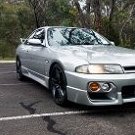Announcements
-
Similar Content
-
Latest Posts
-
Yeah. "New pump" does not have to mean "massive pump".
-
Well, can you still get an OEM pump, and by the time you're buying a Nismo/N1 etc, just buy another aftermarket pump. It's better to have the pump able to flow more if its needed, than for your pressure to drop off. At any point in time, you're replacing the oil pump in a rebuild. Aftermarket pumps are likely going to be a better economical choice, and they don't have any negatives, even if they can flow more. Also, when you're saying "replace the pump gears" are you meaning leave a 25+ year old housing in the engine with unknown wear, and just put new gears in? As that sounds silly to me, especially if you do have that minute amount of wear, that means your new pump gears now have a little bit more clearance beside them, which means, whelp, you may not get to build a lot of oil pressure or make a lot of flow.
-
By joshuaho96 · Posted
Right, but if you replace the pump gears + put a spline or sine drive gear on the crank on a Nismo/OEM/N1/etc pump at that point do you really still want more flow/oil pressure? Let's say this is a the aforementioned "keep it simple" build, no more than ~400 kW at the crank. -
Strength. And on the early RB26, full engagement of the pump drive.
-
By joshuaho96 · Posted
I really don't understand the point of aftermarket oil pumps if your particular engine doesn't need more oil pressure. As far as I can make sense of it the problem seems to be cavitation from sucking air, maybe the pump gear design with how it interfaces with the OEM crank, and maybe the backing plate screws wanting to loosen themselves. How does flowing more oil fix these issues?
-





Recommended Posts
Create an account or sign in to comment
You need to be a member in order to leave a comment
Create an account
Sign up for a new account in our community. It's easy!
Register a new accountSign in
Already have an account? Sign in here.
Sign In Now